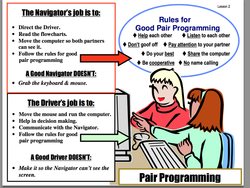Collaboration is an important skill for 21st century learning. It is also a very large component of the 6th grade computer science curriculum. Collaboration can be experienced in a variety of situations,and thanks to the inspiration of Game Designer, Jane McGonigal, the sixth graders had the opportunity to experience to work together through the "game" Massive Multiplayer Thumb Wrestling. According to Ms. McGonigal, games create emotions that bring people together in large groups to tackle problems. "It is about standing up and grabbing as many hands as you can and wrestling together with a really hard challenge."
The 6th graders took the challenge in stride and had a great time attempting this unique version of "thumb wrestling". The skills that they practiced while engaged in MMTW will be used over and over again through out the rotation. Next time you find yourself with a couple of extra thumbs, I recommend giving this "game" a try.

 RSS Feed
RSS Feed